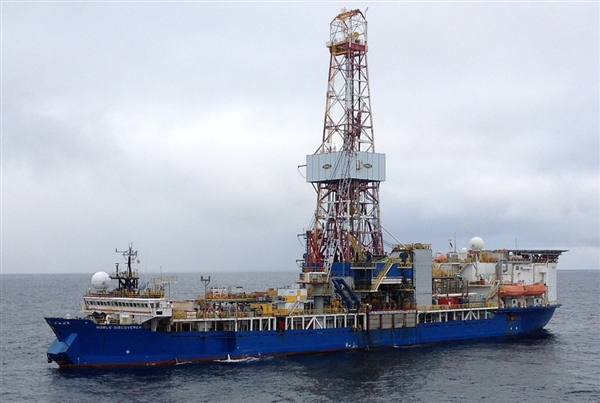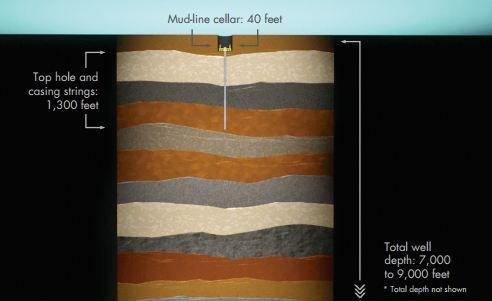
"Today marks the culmination of Shell's six-year effort to explore for potentially significant oil and gas reserves, which are believed to lie under Alaska's Outer Continental Shelf," Shell Alaska Vice President Pete Slaiby said in a statement.
Welcomed by the Obama administration, the exploration in Alaska's Arctic waters has become a major battleground for environmental groups, which fear oil spills in the pristine area already threatened by warming temperatures and reduced sea ice.
"The melting Arctic is a dire warning, not an invitation to make a quick buck," said Dan Howells, a campaign director for Greenpeace.
Shell has paid the U.S. $2.8 billion for lease rights to areas in the Chukchi and neighboring Beaufort Sea, and the U.S. estimates those waters hold 26 billion barrels of recoverable oil and 130 trillion cubic feet of natural gas.
On Aug. 30, Interior Secretary Ken Salazar announced that Shell, even though its spill response barge was not yet certified by the Coast Guard, would be permitted to drill pilot holes and then dig what's called a cellar to hold a critical safety device.
The pilot holes will be 1,300 feet below the ocean floor and roughly 4,000 feet above a known petroleum reservoir.
Shell argues there's little chance of a spill like BP's 2010 Gulf of Mexico disaster. Drilling will be in water about 130 feet deep, it says, versus 5,000 at the site of the gulf spill, and wellhead pressure is expected to be far less.
Support vessels could quickly choke off and cleanup any spill, Shell adds.
Workers on Friday moored the drill ship, the Noble Discoverer, in heavy seas with eight anchors that each weigh 15 tons. The diameter of the circular pattern of anchors is more than 6,500-feet, it added.
The immediate goal is to dig a 20-by-40-foot mud-line cellar that will house a blowout preventer below the seafloor, protecting it from ice scraping the bottom.
Shell's oil spill response barge remains in Bellingham, Wash., and is expected to undergo sea trials over the weekend, Shell said.

Shell last explored in the area in 1991, but it was not economically viable to produce from there at the time.
Shell's other Arctic Ocean drill ship, the Kulluk, is in the Beaufort Sea waiting for the fall whale hunt to end before moving to the drill site.
The company isn't expecting to drill for oil until next year, since it only has a few weeks before sea ice forms in the area. It will then resume drilling next summer.
The Associated Press contributed to this report.



Comment: So are they making an "effort to explore for potentially significant oil and gas reserves," or drilling at a "known petroleum reservoir?"
Inquiring minds want to know. Perhaps it's like this:
There are known knowns; there are things we know that we know. There are known unknowns; that is to say there are things that, we now know we don't know. But there are also unknown unknowns. - there are things we do not know, we don't know." - Donald Rumsfeld